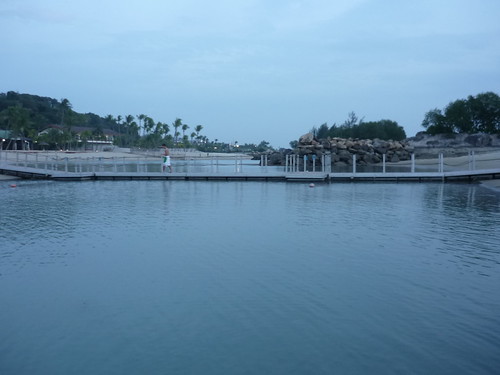
Due to various commitments and a busy work schedule, I haven't had the time to explore the shores at low tide lately. But despite the mountain of work I had to clear, I simply couldn't resist the urge to just spend a few hours getting my feet wet.
I headed down to Sentosa, and along the way, I was wondering if I should make an impromptu visit to the TeamSeagrass folks who were having a monitoring session at Tanjung Rimau. But I finally decided to check out one of the islets off Siloso Beach once again.
There's something very irresistible about this site. Maybe it's the fact that the marine life here has never been properly documented by other people. Every time I visit this place, I'm sure to spot something new, something that one wouldn't quite expect to find on such a heavily used shore like Siloso Beach.
Maybe it's the challenge that makes these trips so exciting in the first place; the water is extremely murky, bearing a strong resemblance to Horlicks, and most of the creatures you spot will vanish before you can even think of taking out your camera. It takes a lot of luck, patience, and a strong back to take half-decent photographs of the various critters living along this shore.
Maybe it's also because of the surprising, even spectacular discoveries that I've been making, whether it's a common sea star (Archaster typicus) half-buried in the sandy seabed, or a seahorse (Hippocampus kuda) hiding amongst the tape seagrass (Enhalus acoroides).
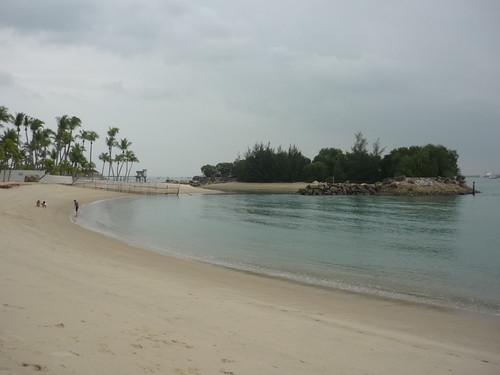
This particular stretch of beach seems rather quiet on weekdays. Despite the relative lack of human traffic, the nearby Café del Mar can always be counted upon to provide some background music. And in the evenings, one cannot help but hear snippets of the multimedia extravaganza that is Songs of the Sea, replete with lasers and pyrotechnics. Perhaps the daily acoustic assault helps desensitise the local marine life, enabling them to cope with far bigger events like ZoukOut and New Year's Eve countdown parties.
As usual, there's always plenty of stuff to find on the bridge that connects the islet to Siloso Beach.
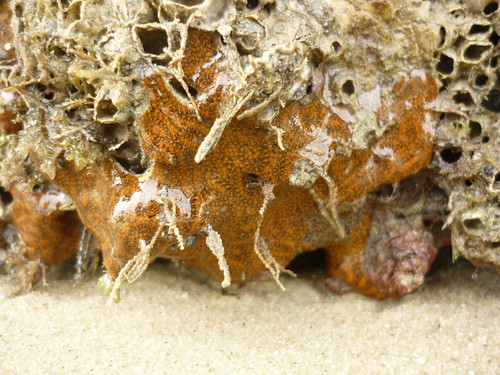
I'm dying to find out if these reddish things growing on certain parts of the bridge are some sort of hard coral.
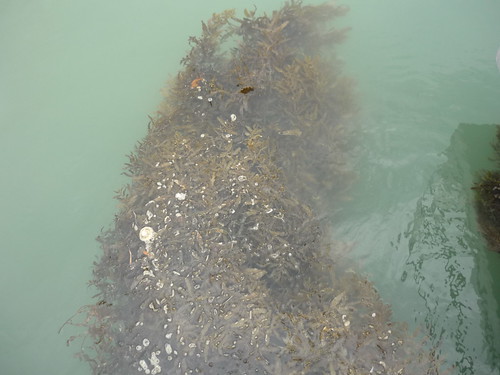
Sargassum (Sargassum sp.) remains the dominant organism in this area, growing in dense masses along the bridge.
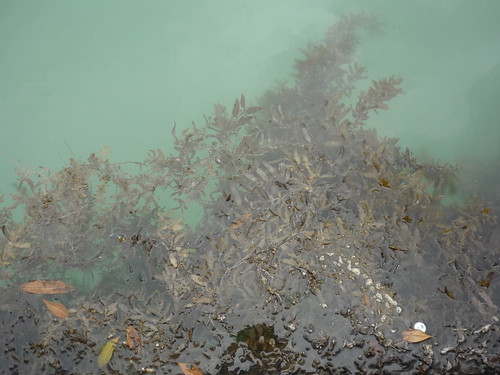
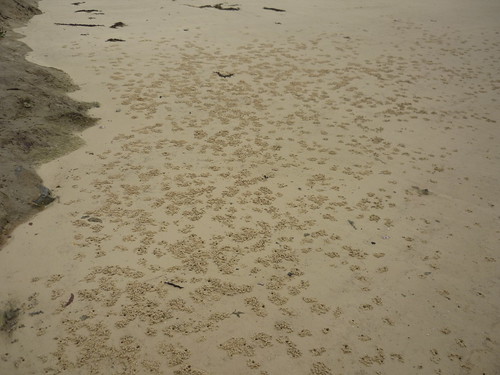
This islet has a healthy population of sand bubbler crabs (Scopimera sp.), as can be seen from the huge number of burrows.
These burrows are concentrated mainly on one end of the islet, close to the rocks.
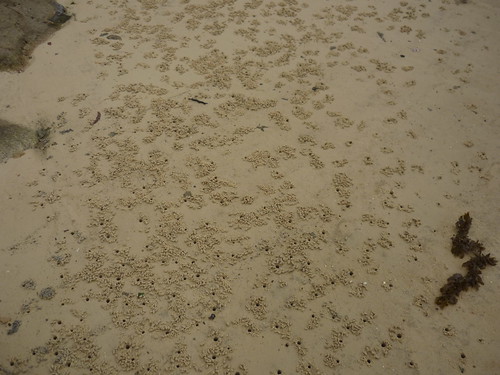
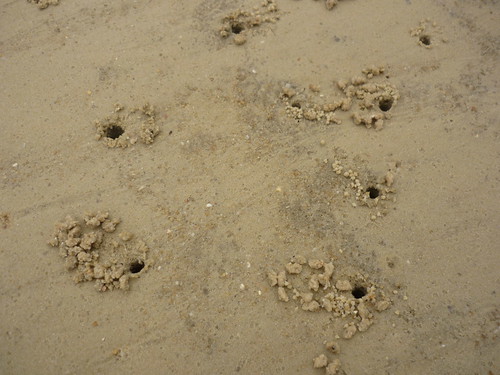
The sand bubbler crabs here are extremely shy; they refused to emerge from hiding while I was around. Unsurprisingly, the ones that did pop out of their burrows were those furthest away from me, well beyond my camera's zoom-in capacity.
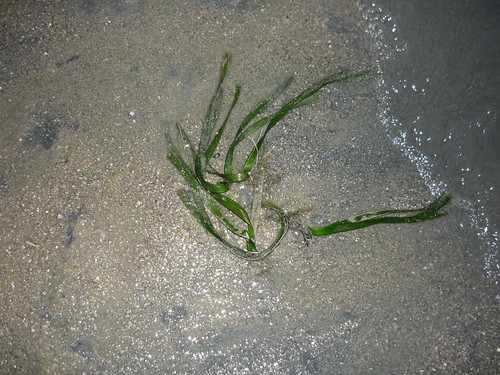
Previously, I'd found a solitary tape seagrass growing near the beach. This time around, it was high and dry, so there was no seahorse to be found.
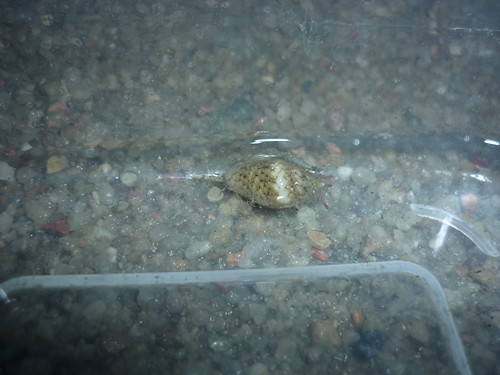
But I did find a single dotted dove snail (F. Columbellidae). These snails are usually found on large seagrasses and seaweeds.
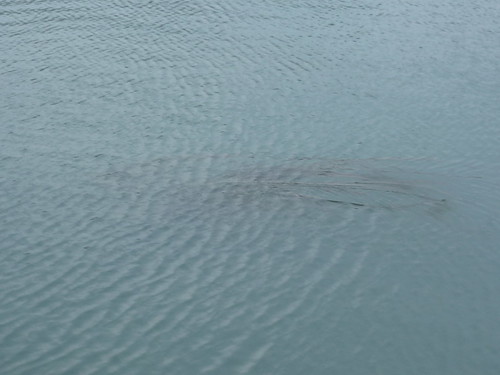
I spotted more tape seagrass growing further out in the lagoon. The leaves must be really long, since the water out there is quite deep.
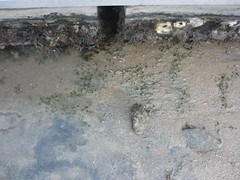
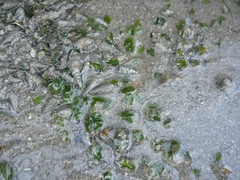
The small patches of spoon seagrass (Halophila ovalis) are still there.
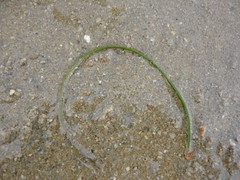
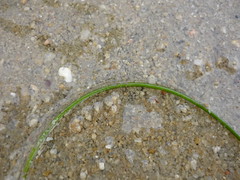
Could this be a piece of noodle seagrass (Syringodium isoetifolium)?
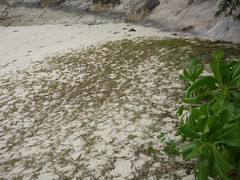
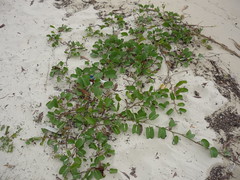
On the high shore, the sand has been colonised by grasses and seashore morning glory (Ipomoea pes-caprae).
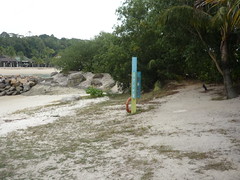
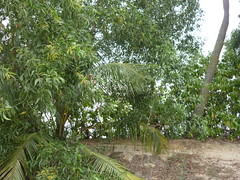
A fringe of coastal forest has formed along the ridge at the top of the islet.
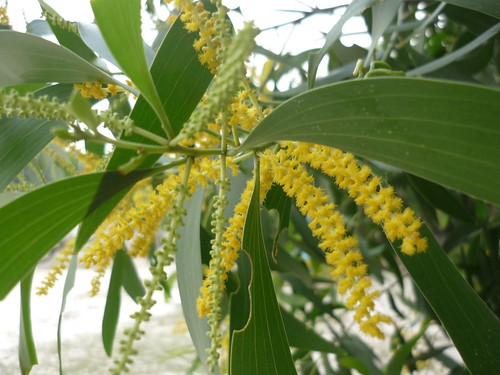
Among the dominant tree species here are sea hibiscus (Talipariti tiliaceum), as well as common acacia (Acacia auriculiformis), a plant originally native to Australia and New Guinea, but now widespread throughout Singapore. Large coconut trees (Cocos nucifera), the symbol of tropical beaches everywhere, can also be found growing here.
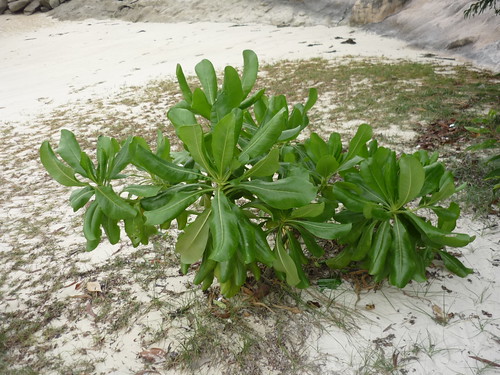
Another tree commonly found here is the sea lettuce (Scaveola sericea), which confusingly enough, is also the name of a type of seaweed (Ulva sp.).

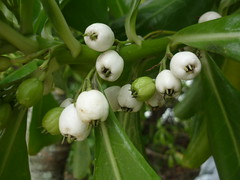
Several of the mature sea lettuce trees are bearing flowers and fruit.
These trees are visited by a variety of birds, from pairs of Javan mynas (Acridotheres javanicus) and spotted doves (Streptopelia chinensis), to collared kingfisher (Todiramphus chloris), Asian koel (Eudynamys scolopacea), olive-backed sunbird (Cinnyris jugularis) and pink-necked green pigeon (Treron vernans). Today, I was accompanied for a while by an ashy tailorbird (Orthotomus ruficeps).
I did not manage to spot any Brahminy kites (Haliastur indus) and white-bellied sea eagles (Haliaeetus leucogaster) soaring in the distance, but I did find a little heron (Butorides striatus) perching on one of the rocks.
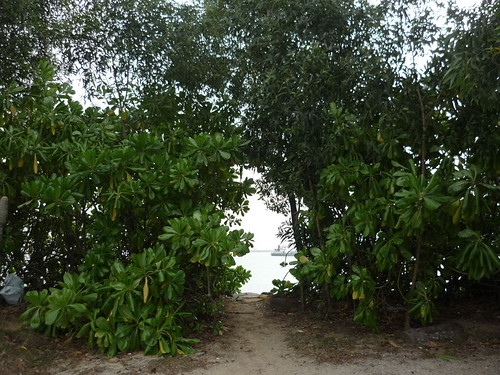
There are gaps amongst the trees, allowing one to take a peek at what's on the other side.

If one isn't clumsy enough to tumble down the steep rocky slope that forms the other side of the islet, you can get to enjoy a panoramic view of the Straits of Singapore, studded with ships as far as the eye can see.
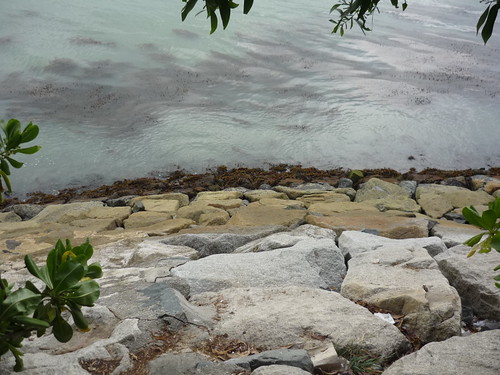
This side appears to be overgrown with sargassum. I suppose this is the source of all the sargassum washing up on the beach. Who knows what marine life might be found living down there?
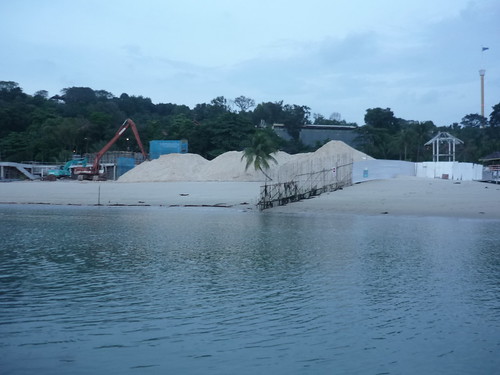
One section of Siloso Beach has been cordoned off for some time for development works. I wonder what they have planned for this area. Similarly, the islet where I first discovered the rich marine diversity of Siloso Beach is now inaccessible, since that stretch of beach is also undergoing development of some sort. Maybe this is contributing to the high amount of sediment in the water. One hopes that the marine life is not too badly affected.

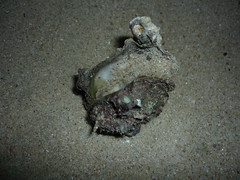
On the beach, both on Siloso Beach and the islet, I found a few scattered empty bivalve shells. I wonder if these were deliberately removed from the bridge and then pried open by people. My expertise in bivalves is horrible, but I think the one on the right is some sort of oyster (F. Ostreidae).
Coming up: A glimpse at some of the fascinating creatures found living here.
This is part 1 of a 2-part series on a trip to Siloso Beach on 12th January, 2009.
Part 1: Return to Siloso (this post)
Part 2: Siloso: Suckers and Stars